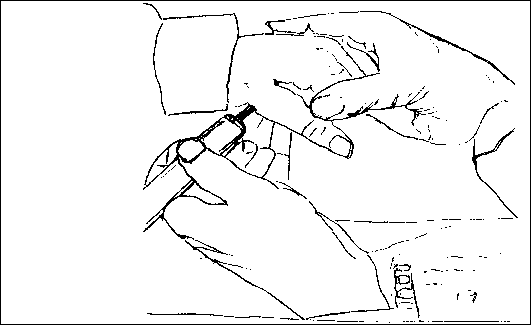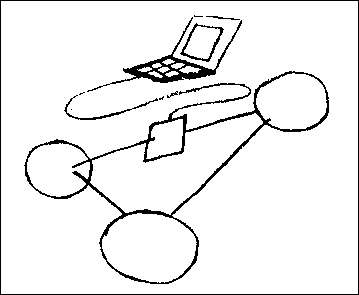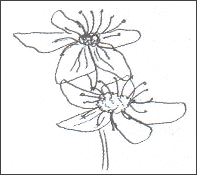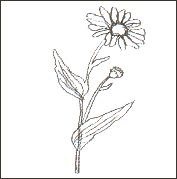
Erfahrungs.......
Electro – Acupunture
-The Voll Method
Allergies
High Blood Pressure
Chronic
Tiredness
Chronic
Infection
Depression
Bowel Disorders
Joint Pain
Hair Loss
Dry Eyes

 |
Naturopathy Erfahrungs....... Electro – Acupunture -The Voll Method Allergies High Blood Pressure Chronic Tiredness Chronic Infection Depression Bowel Disorders Joint Pain Hair Loss Dry Eyes |
| 1. | The objectives of this book | 9 |
| 1.1 | The immune system as a complete system | 10 |
| 1.2 | The causes of illness and multiple hazards | 10 |
| 2. | Holistic Diagnosis | 13 |
| 2.1 | EAV Testing to determine exact diagnosis | 13 |
| 2.2 | Quantec analysis of the causes of illness | 17 |
| 3. | Health Precautions | 21 |
| 3.1 | Health Checks and Autonomy Training | 21 |
| 3.2 | Questionnaires – General, Children, Tumour questionnaire, Small Autonomy questionnaire | 22 |
| 4. | Soft Therapies | 41 |
| 4.1 | The Digestive System | 41 |
| 4.2 | Nosodetreatment | |
| 4.3 | Homeopathy; Organextract treatment | |
| 4.4 | Plant Remedies (Phytotherapy) | 60 |
| 4.5 | Bach Flower Remedies | 65 |
| 4.6 | Antacid Therapy | 68 |
| 4.7 | Nutrition Therapy | 70 |
| 4.8 | Vitamins, Minerals and Trace Elements | 72 |
| 5. | The Enduring Healing of Chronic Illnesses as opposed to Long Term treatment of Symptoms | 83 |
| 5.1 | When Conventional Medicine prove innefective | 85 |
| 5.2 | Why Naturopathy begins at the source | 87 |
| 5.3 | 5.2How natural healing treatment works | |
| 6. | Chronic Illnesses and their cause | 93 |
| 6.1 | Allergies, Asthma, Excema, and Food Intolerance | 94 |
| 6.2 | Cholesterol (Homocystein and excessive weight) | 97 |
| 6.3 | Chronic Tiredness / Sleep Disorders | 99 |
| 6.4 | Depression | 101 |
| 6.5 | Joint Pains and Rheumatism | 105 |
| 6.6 | Hair Loss | 107 |
| 6.7 | Herpes Simplex Lip Herpes; Herpes zoster | |
| 6.8 | Irregular Heart Rhythm / Circulation Disorder | 109 |
| 6.9 | Hormonal Imbalance / Childlessness | 113 |
| 6.10 | Incontinence, Bedwetting, Nykturie | 116 |
| 6.11 | Chronic Illnesses in Children | 117 |
| 6.12 | Headaches and Migraine | 120 |
| 6.13 | Multiple Sclerosis / Undefined Nervous Conditions | 122 |
| 6.14 | Fungal Infections / Chronic Bowel Complaints | 123 |
| 6.15 | Tinnitus | 125 |
| 6.16 | Heavy Metals; Amalgam and Palladium | 126 |
| 6.17 | Dry Eyes | 127 |
| 6.18 | Tumorous Diseases | 129 |
| 7. | Other Therapies for Chronic Illnesses | 133 |
| 7.1 | Aculife Therapy ( "Do it Yourself" – Acupuncture) | 133 |
| 7.2 | Electro - Carcinoma Therapy (Galvanic Therapy) | 134 |
| 7.3 | Localised Heat Treatment (Tumors and Joint Pain) | 136 |
| 7.4 | Infra Red Warming Cabin | 138 |
| 7.5 | Frequency Therapies | 140 |
| 7.6 | Matrix Regeneration Therapy (MRT) | 140 |
| 7.7 | AIRnergy Activated Oxygen | 141 |
| 8 | Reasons for Optimism: EAV | 143 |
| 8.1 | Naturopathy Day Clinic – Marburg | 145 |
| 8.2 | Health – Wellness Seminar | 146 |
| 8.3 | Internet Library | 146 |
| 8.4 | Information and Experience Exchange Forum | 147 |
| 8.5 | Education Natural healing advisor | 148 |
| 8.6 | Our Own Scientific Studies | 149 |
| - Double blind study Diagnostic with Elektroakupuncture-Voll | 150 | |
| - Marburg Study of Amalgam related Allergy | 150 | |
| - Marburg Study of the Toxic Effects of Amalgam | 150 | |
| - Study of Headaches and Migraine | 152 | |
| - Study of "Dry Eye" | 155 | |
| - Multiple Sclerosis | 157 | |
| - Chronic Illness in Chidren I and II | 157 | |
| - Soft Hyperthermic Therapy | 157 | |
| - Backache and Joint Pain | 157 | |
| 8.7 | Precaution Programme 1994 – 2004/5 | 158 |
| 8.8 | 8.1Insurance companies for natural treatments | |
| 8.9 | Adresses | |
| 9. | Books, literature, Video, internetforum |

Amalgam (Viruses, Bacteria, Fungus, Parasites) |
 |



| Allergy test of the blood / Positive |
| Allergy test on the skin / Positive |
| With nausea: | ||
| Worse in light: |
| Bowel movement: | ||
| Varicose veins: | ||
| Diabetes: | ||
| Thyroid complaints: | ||
| Pancreatic problems: | ||
| Results of laboratory tests: |
| Regular cycle: | ||
| Premenstrual pain: | ||
| Pain during menstruation: |
| Tumorous growths: | ||
| Affecting which organ?............................ | ............................... | |
| Has the tumor been operated on? | ||
| Chemotherapy: | ||
| Radiotherapy: | ||
| Hormonal therapy: | ||
| Have you suffered a relapse? |
| Chickenpox: | ||
| Measles: | ||
| Rubella: | ||
| Mumps: | ||
| Whooping cough: | ||
| Others: |
| 17) Fungal infections: | ||
| Bowel infection: | ||
| Vaginal infection: | ||
| Nail fungal infection: | ||
| Frequent antibiotic use: |
| 18) Serious infections: | ||
| Jaundice: | ||
| Influenza: | ||
| Tuberculosis: | ||
| Intestinal infection: | ||
| Glandular Fever: | ||
| Other infections: |
| Bad reaction to vaccination: | ||
| Oversea travel vaccination: | ||
| Tuberculosis vaccination: |
Current domicile |
Previous domicile |
|||
| Wood panelling : | ||||
| Chipboard: | ||||
| Mould: | ||||
| Carpets: | ||||
| Industrial fumes: | ||||
| Do you smoke? |
| Do others smoke in your home? | ||
| Are there smokers at your place of work? |
| Pets: | ||
| Dog: | ||
| Cat: | ||
| Guinea Pig: | ||
| Fish: | ||
| Rabbit: | ||
| Horse: | ||
| Bird: | ||
| Other animals: |
| Previous ?????????????? | ||
| ..........DMPS: | ||
| Zinc: | ||
| Selenium: | ||
| ..........Homeopathic remedy: | ||
| Other improvements following removal of amalgam: | ||
| If yes, what? | ||
| Replacement with gold / silver coloured material: | ||
| Bridges: | ||
| Crowns: | ||
| Inlays: | ||
| Part prostheses: | ||
| Other tooth replacements:............................... | ||
| Root filled, dead or other abnormal teeth: | ||
| Other abnormalities in the jaw region: | ||
| Root filled, dead or other abnormal teeth: | ||
| Abnormal top jaw: | ||
| Abnormal bottom jaw: | ||
| Allergy tests for dental materials: | ||
| Blood test: | ||
| Skin test: | ||
| DMPS test: | ||
| LTT, Melisa test: |
| Are you taking regular medication?: |
| Previous long term medication: |
| Vitamins: |
| Trace elements: |
| Valerian: | nervousness, sleep disorders, headaches. |
| Bärentraube: | kidney problems, disorders of the small intestine. |
| Stinging Nettle: | gout, rheumatism, excema and other skin complaints. |
| Fennel: | bloating, colic, bronchitis, colds. |
| Ginko: | circulation |
| Elder: | hroat or mouth infection,rheumatism |
| St. John’s Wort: | depression, sleep disorders,nervousness. |
 St. John’s Wort
St. John’s Wort| Camomile: | cataarh, stomach or bowel ulcers, menstruation |
| Garlic: | bronchitis, bowel infection |
| Carduus Marianus: | liver and gall bladder complaints |
| Lemon Balm: | bloating, nausea |
| Mistletoe: | tumours, hypertonus |
| Peppermint: | stomach – bowel cataarh,colic, heartburn |
| Echinacea: | slow healing wounds |
 Echinacea
Echinacea
| Sage: | nervousness, stomach – bowel cataarh |
| Hawthorn: | heart and circulation diseases |
 Hawthorn
Hawthorn